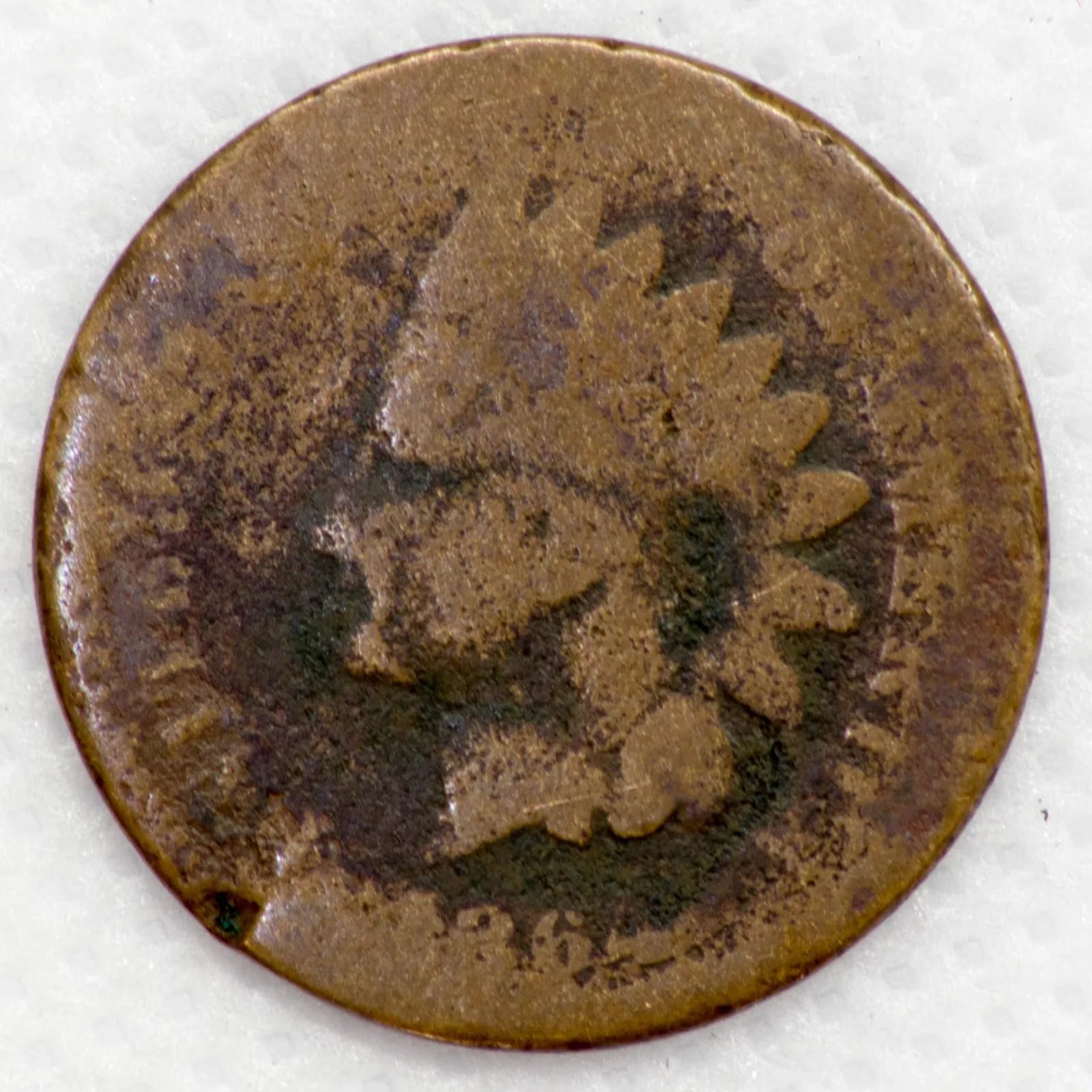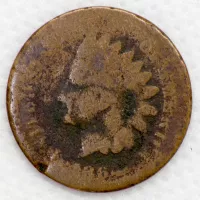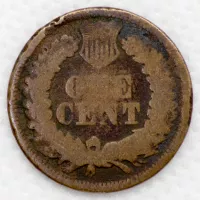1864 Indian Head
Details
-
Category
-
DetailsThe 1864 Copper Nickel Indian Cent is the second lowest mintage coin in the Copper Nickel Indian cent series from 1860 - 1864. In circulated grades it is harder to find than the 1860, 1862 and 1863 or the common dates. Therefore, the 1864 Copper Nickel Cent commands a slight premium over the more common dates in most circulated grades. Only the 1861 with a lower mintage is more difficult to find in circulated grades. This is also why the 1861 commands a slightly higher premium than the 1864 Copper Nickel in circulated grades.
-
Year1864
-
Mintage39,233,714
-
DesignerJames B Longacre
-
Composition95% Copper - 5% Tin and Zinc
-
Diameter19mm
-
GradeG-4
-
Weight2.88g actual vs. 3.11g nominal
-
Valued at$8.00
Indian Head
The Indian Head cent, also known as an Indian Head penny, was a one-cent coin ($0.01) produced by the United States Bureau of the Mint from 1859 to 1909. It was designed by James Barton Longacre, the Chief Engraver at the Philadelphia Mint.
From 1793 to 1857, the cent was a copper coin about the size of a half dollar. The discovery of gold in California caused a large inflation in prices. As gold became more abundant, the price of copper rose. Cent and half-cent manufacture was one of the only profit centers for the Mint and by 1850 it began looking for alternatives. In 1857, the Mint reduced the size of the cent and changed the composition to 12% nickel and 88% copper (copper-nickel), issuing a new design, the Flying Eagle cent. The new pieces were identical in diameter to modern cents, though thicker. This was the first use of copper-nickel for United States coins. The copper-nickel made them look brighter and they began to be called "White cent" or "Nicks".
In 1858, the Flying Eagle was replaced with the Indian head design. The Flying Eagle design caused production difficulties and the Mint soon looked to replace it. Mint Director James Ross Snowden selected the Indian Head design and chose a laurel wreath for the reverse, that was replaced in 1860 by an oak wreath with a shield. Cents were hoarded during the economic chaos of the American Civil War, when the metal nickel was in short supply. As Mint officials saw that privately-issued bronze tokens were circulating, they induced Congress to pass the Coinage Act of 1864, authorizing a slimmer cent of bronze alloy.
In the postwar period, the cent became very popular and was struck in large numbers in most years. An exception was 1877, when a poor economy and little demand for cents created one of the rarest dates in the series. With the advent of coin-operated machines in the late 19th and early 20th centuries, even more cents were produced, reaching 100 million for the first time in 1907. In 1909, the Indian Head cent was replaced by the Lincoln cent, designed by Victor D. Brenner.


